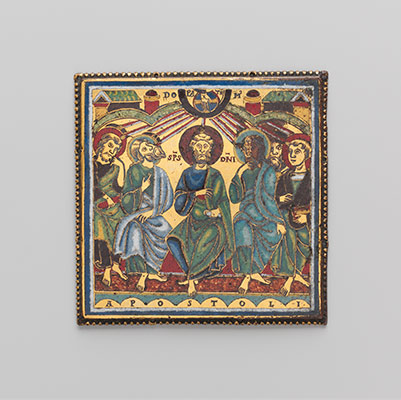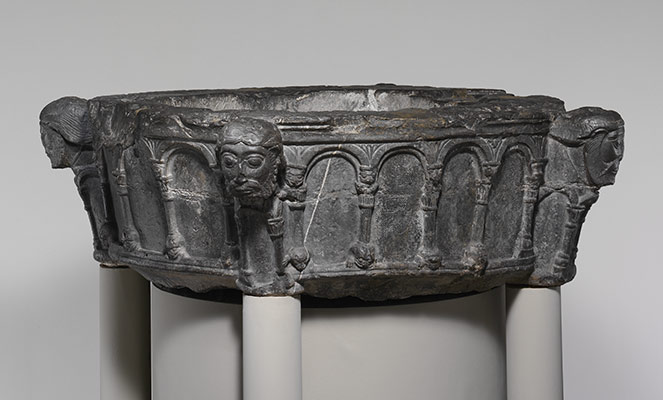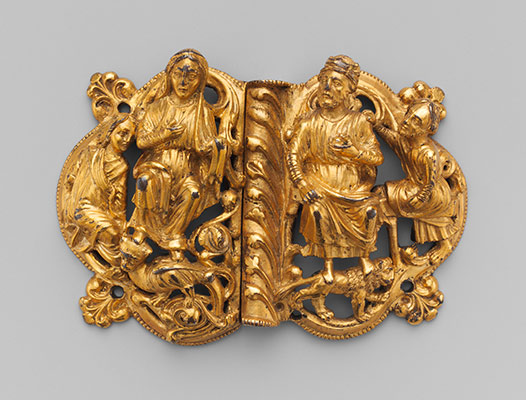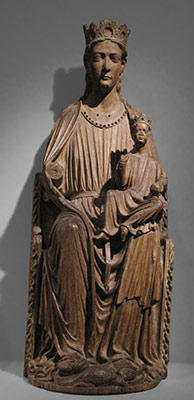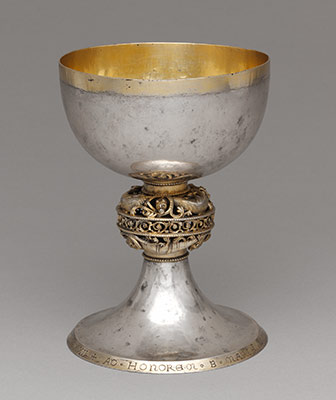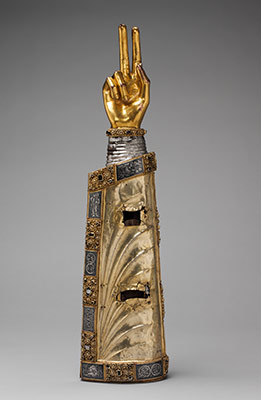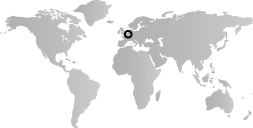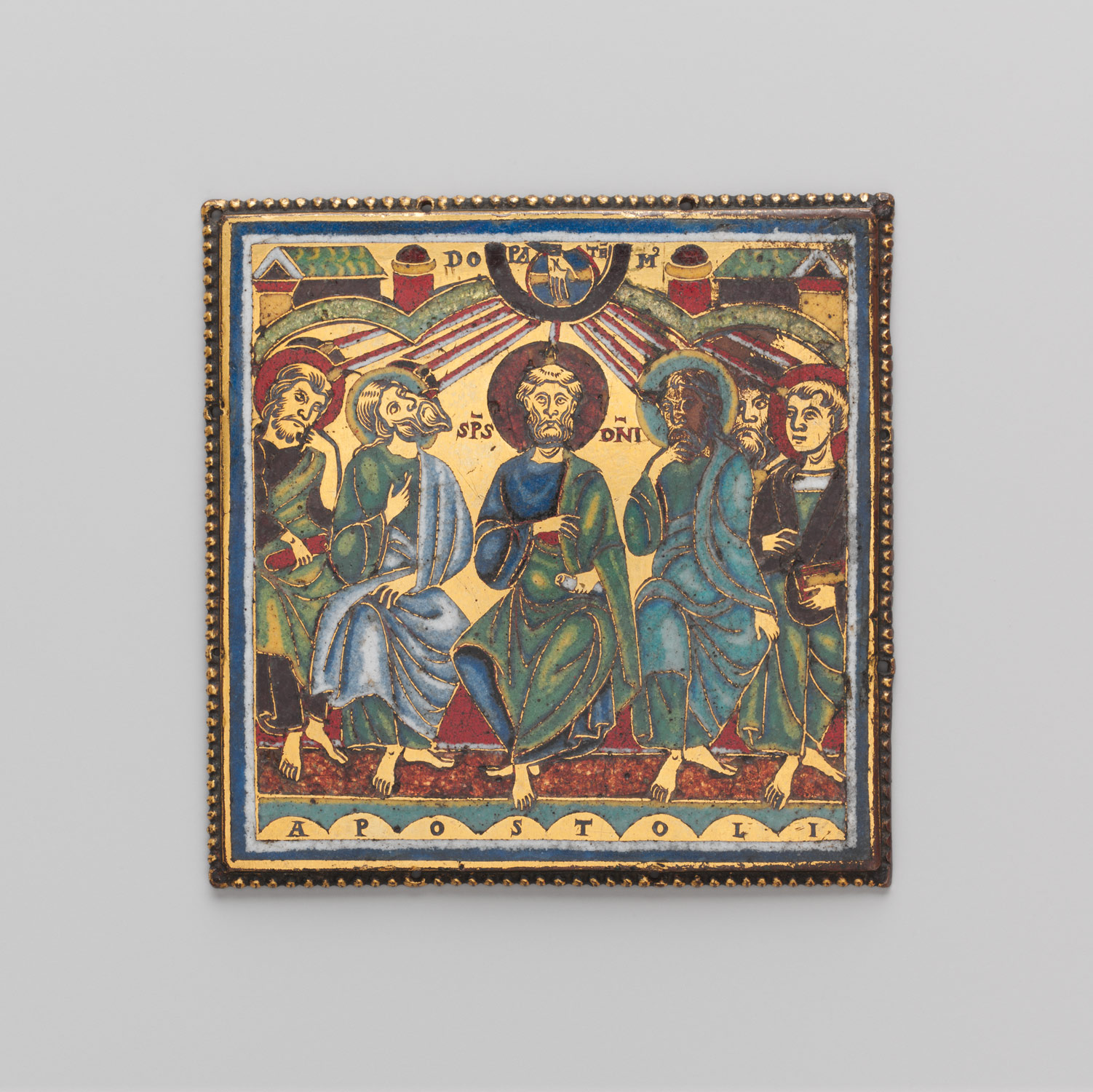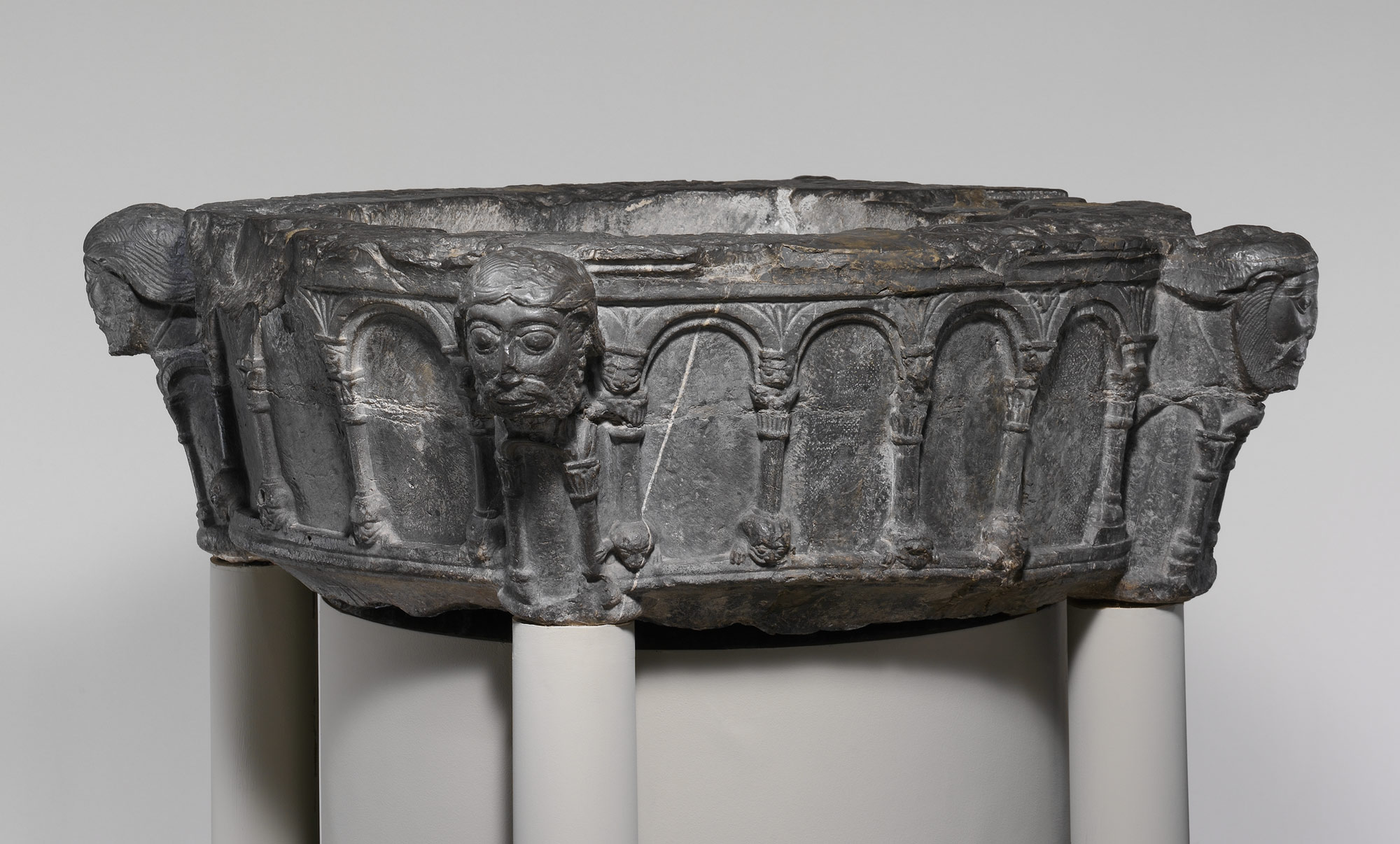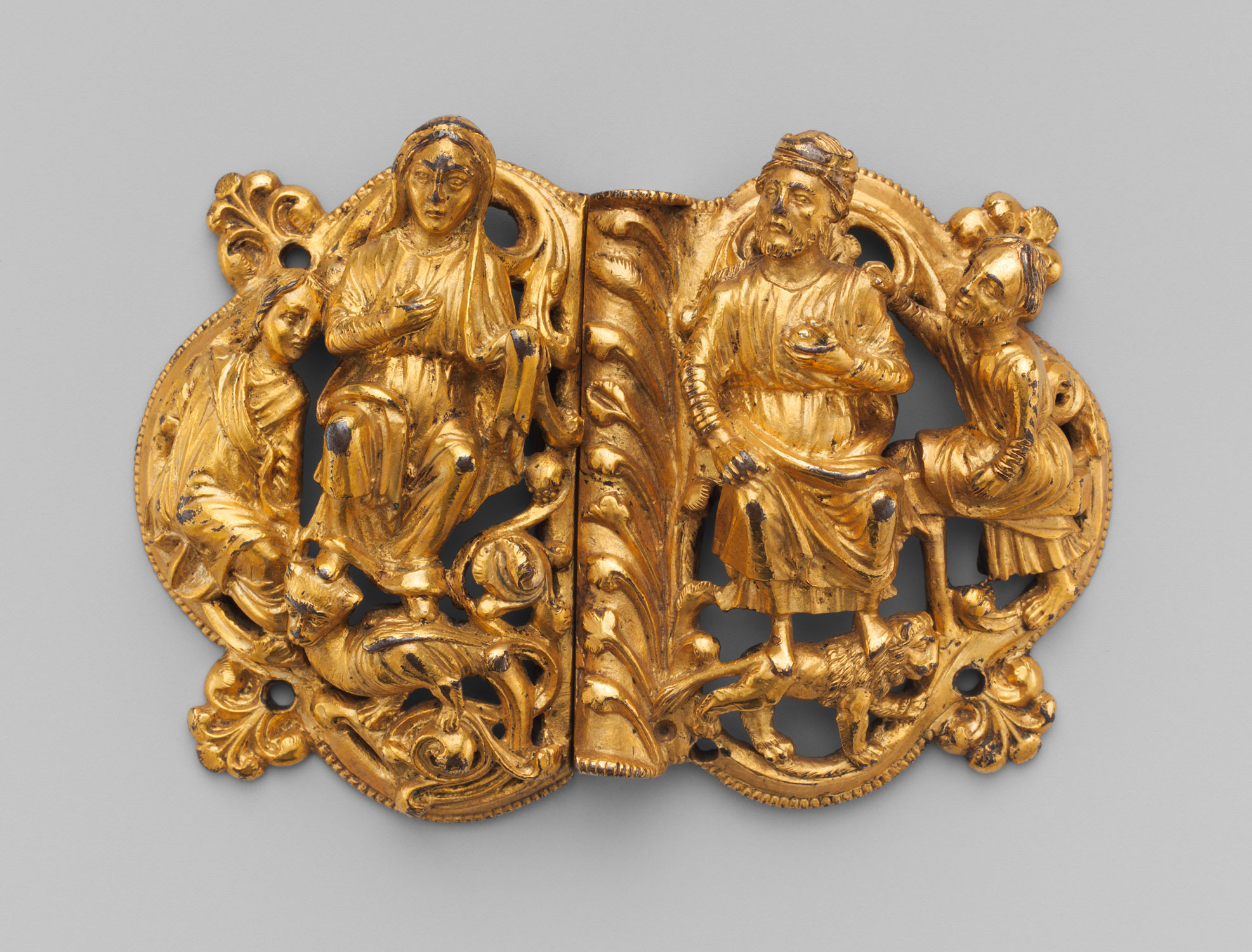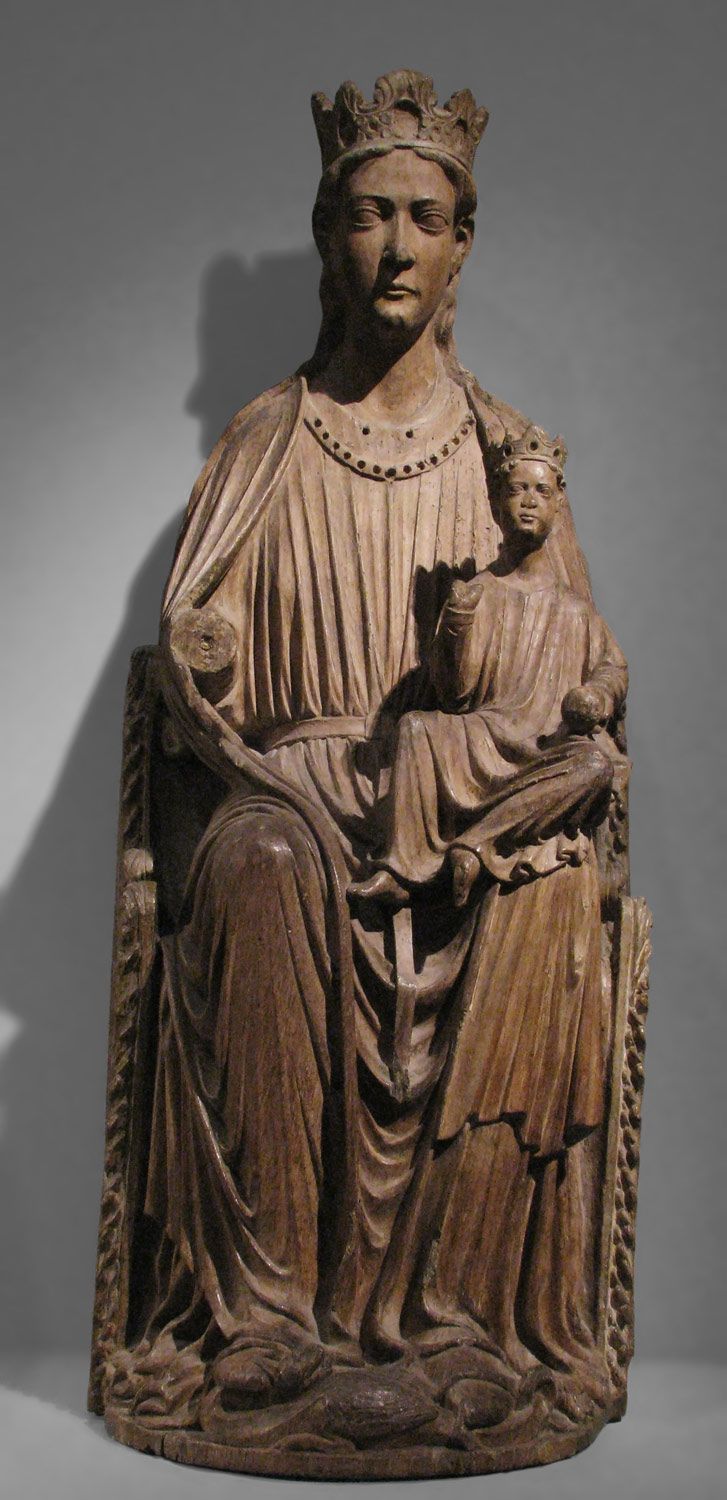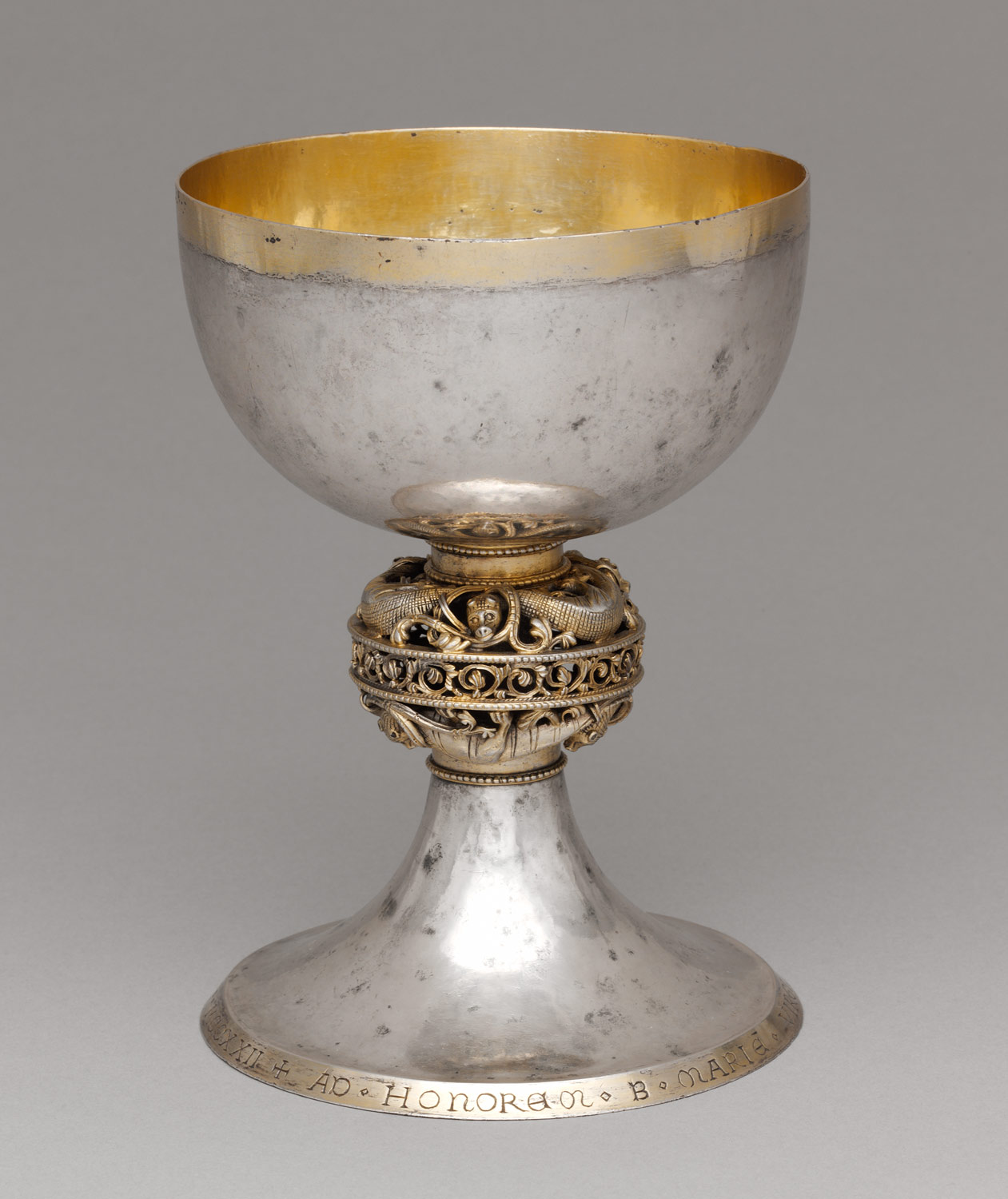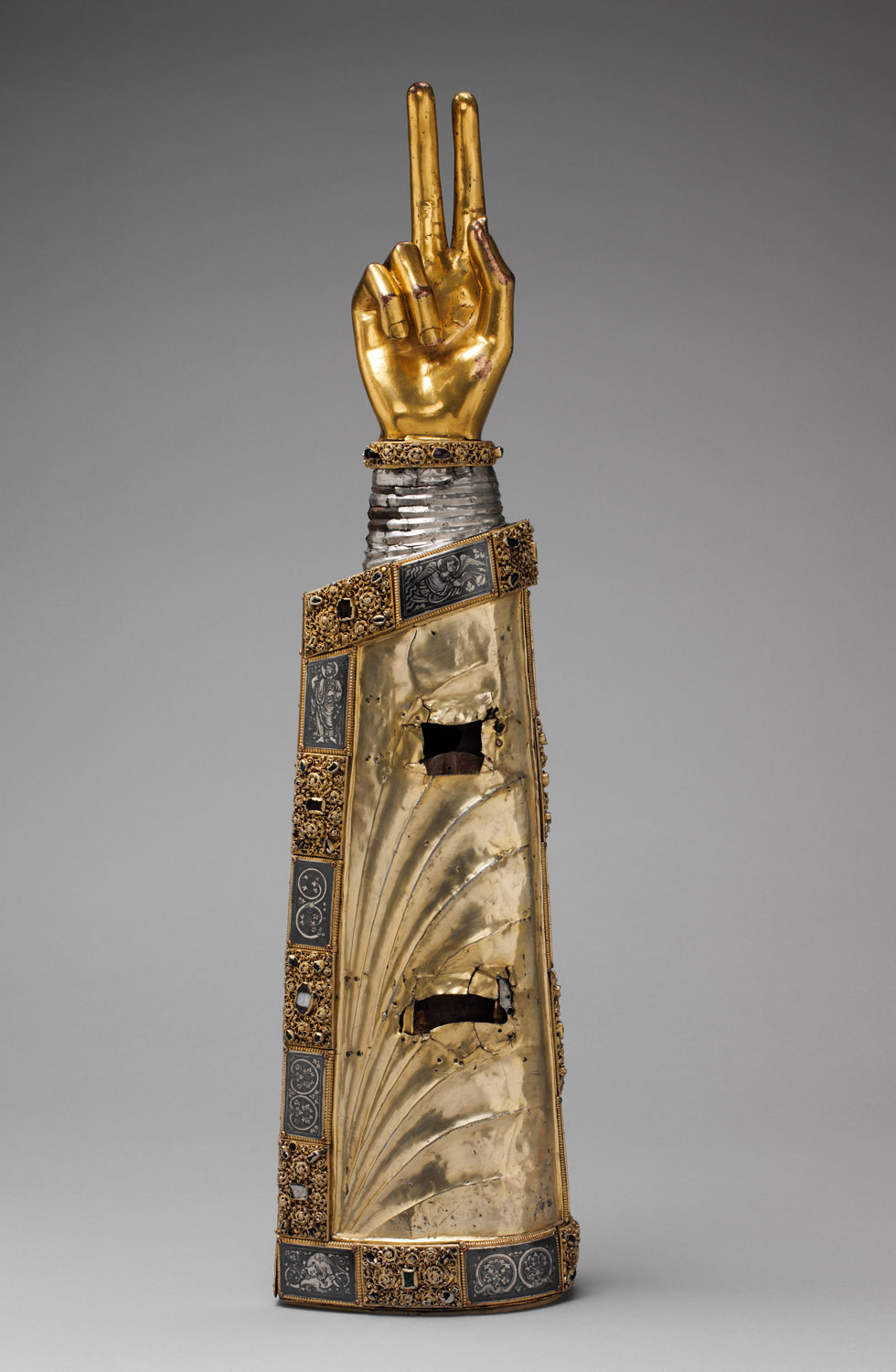Situated on the North Sea, the Low Countries are in the cultural and political orbit of France and Germany. During the period covered here, most of the counties and duchies in the region are, technically at least, vassals of the Holy Roman Empire. The exception is Flanders, the most important and powerful county, which belongs to France. This time of rapid political change sees the emergence of powerful secular and ecclesiastical principalities, the rise of an urban elite, and, with the annexation of the region to the Burgundian territories in the late fourteenth century, the gradual emergence of a sense of national identity.
The church is the primary patron of the arts. Imposing ecclesiastical structures are erected throughout the region. Early examples, such as Notre-Dame at Hastière built around 1035, are distinguished by a clear articulation of volumes and heavy walls. Gothic architecture, influenced by buildings in Burgundy and the Champagne, appears relatively late in the Low Countries, never to attain the lightness of French models, as exemplified by the rather stark Church of Notre-Dame at Dinant of 1227–47. Commissions for church furnishings abound, leading to the production in the twelfth and thirteenth century of sculpture, manuscript illumination, and ivory carving. With artists such as Rainer of Huy and Nicholas of Verdun, the Mosan region is one of the most innovative and influential centers for metalwork in western Europe. The manufacture of cloth, made from local and English wool, is a dominant industry from the twelfth century onward. A decline in sales in the fourteenth century prompts the burgomaster of Arras to produce luxury tapestries rather than ordinary fabrics. The town becomes a prime center of medieval tapestry weaving, to be replaced by Brussels and Tournai in the fifteenth century. The end of the period sees the emergence of easel painting as an independent genre.
